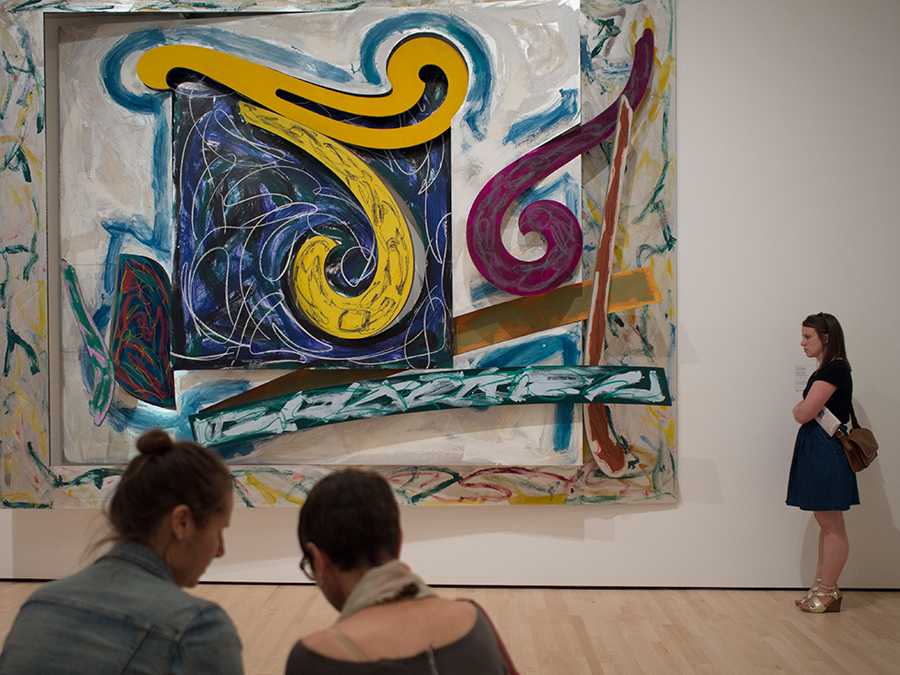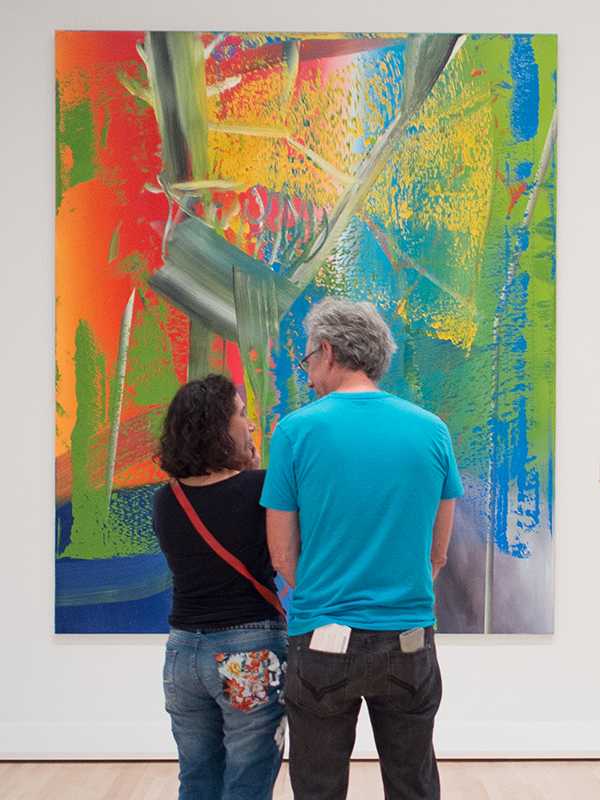SFMOMA: A local treasure becomes a national treasure
May 18, 2016
The massive Alexander Calder mobile suspended through the iconic skylight illuminates the expansive black granite floored atrium when you step into the main lobby of the reopened San Francisco Museum of Modern Art. Besides it and the altered main staircase, there’s little else from this perspective to indicate the the museum’s enormous expansion.
The SFMOMA reopened to the general public on May 14 after a three year, $305 million renovation and expansion.
The public is now able to view an overwhelming collection of modern art so vast that you only can grasp its entirety after several visits. In fact, most people will benefit from pre-visit planning at the SFMOMA website.
After entering through the main atrium lobby, guests ascend the new staircase to the second-floor ticketing area and gallery space.
Once on the second floor, you begin to appreciate the extent of the expansion.Gallery space has increased from the original 70,000 to 170,000 square feet, equivalent to over four acres, making SFMOMA the largest modern art gallery in the United States.
The new building is more than a marvel of architectural design. It’s also a welcoming place with abundant space for people to easily move around. Massive picture windows and inviting balconies provide dramatic views of the changing South of Market Street skyline. These windows and balconies also allow light in on areas where people can rest between galleries.
Aside from the striking new structure, the SFMOMA has become the beneficiary of a new partnership with the Doris and Donald Fisher Collection, one of the greatest post-World War II collections of art in the world. The exhibition of the 1,100-piece Fisher Collection includes entire gallery rooms dedicated to the works of Andy Warhol, Chuck Close, Roy Lichtenstein, Gerhard Richter and Alexander Calder to name a few.
While the Fisher Collection occupies several galleries on four floors, the museum’s permanent collection can still be found on the second floor of the older section of the museum – where it has been since 1995. This collection features works by Diego Rivera, Frida Kahlo, Marcel Duchamp, Clyfford Still and Robert Rauschenberg. For anyone familiar with the SFMOMA, the works in these galleries represent familiar
favorites. In particular, Mark Rothko’s “No. 14 1960,” with its glowing orange and deep blue hues, remains a highlight for anyone visiting the museum.
Another important feature of the new museum is the impressive amount of space dedicated to photography, both to artworks and to state-of-the-art photographic storage facilities and a study center for scholarly research. For its inaugural exhibitions, the photography section features artworks dedicated to the themes of the perception of time, California and the West. The highlight of the photography exhibits is a gallery with the late-career works of Diane Arbus.
Despite its Costco-sized scale, the new SFMOMA is no mere warehouse of modern art. It is a surprisingly human structure that invites people to visit and linger among some of the greatest works of art produced in the twentieth and twenty-first centuries. Spread among the galleries are places where people are invited to rest and reflect. Because of its enormous scale, it is also a museum where those who love modern art can form a relationship with a place that promises to surprise and challenge.


